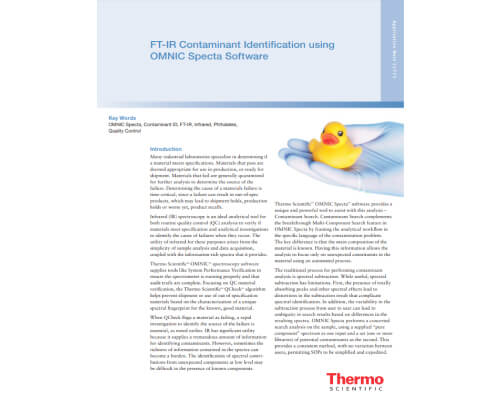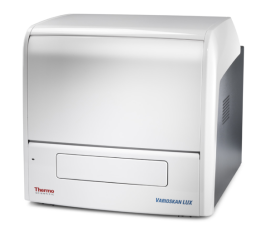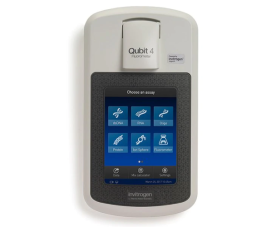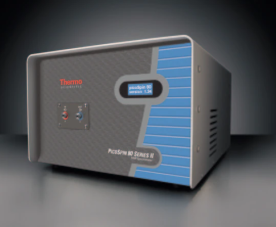Thermo Scientific molecular spectroscopy solutions include UV-Vis, FT-IR, FT-NIR, Raman spectroscopy and microscopy, NMR, as well as fluorometry. These instruments enable qualitative and quantitative analysis of a wide range of organic and inorganic samples in academic, analytical, QC/QA, forensics and contract laboratories, as well as in the polymer, pharma, food and beverage industry, but also for microplastics, nanomaterials and other material science related applications.
Bench and portable cryogen-free Pico-Spin NMR spectrometers provide easy-to-operate reaction monitoring for both QA and QC in chemical manufacturing and organic chemistry education.
UV-Vis spectrophotometers can meet any challenge for the needs of any type of laboratory – whether educational, contract laboratories, or in the pharmaceutical, chemical, beverage industry, etc. Applications go all the way to providing DNA, RNA and protein quantification, with only 1–2 µL of sample in seconds using NanoDrop spectrophotometers.
FT-IR spectrometers are used for both qualitative and quantitative analysis of organic and inorganic samples, whether in academic, analytical, QC/QA, or forensics labs. FTIR is also frequently utilized for polymer testing and pharmaceutical analysis. Moreover, the technique offers virtually limitless applications.
The FT-NIR technique has various applications in research and testing of pharmaceuticals (tablet content uniformity and coatings, lyophilized material moisture and stability, on-line process monitoring, hot-melt extrusion blend consistency, fermentation and cell culture monitoring), polymers and chemicals (incoming material verification, blend uniformity, analysis of additives, moisture, monomers, reaction monitoring development, scale-up, on-line process monitoring) as well as of food and agricultural products (raw agricultural products, flour milling, dairy products, edible oil, sugar & confections, beverage)
Thermo Scientific DXR Raman spectrometers and microscopes enable you to access your Raman data faster than ever and in addition find applications in academic research, forensics, gemology, nanotechnology, material science, geology, life sciences & bio-materials, automotive/aero industry, art restoration & conservation, as well as in pharmaceuticals, polymers, microplastics, electronisc, energy storage and cosmetics related applications.
Molecular Spectroscopy Applications
Available in countries :
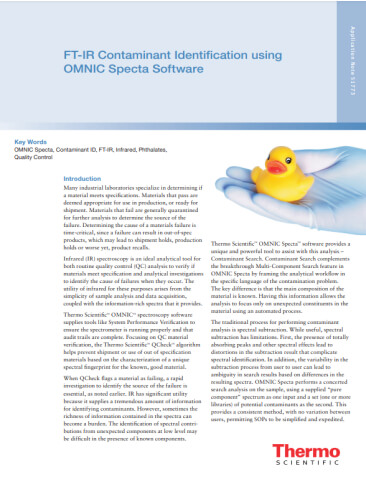
FT-IR: FT-IR Contaminant Identification using OMNIC Specta software
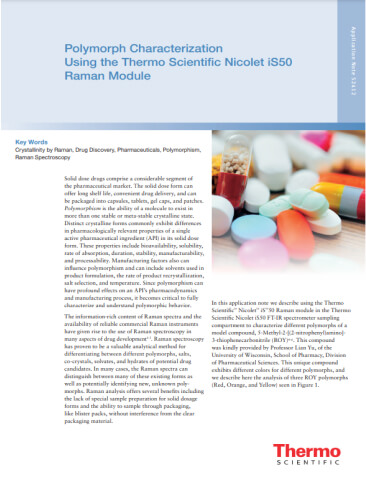
FT-IR: OMNIC Specta Software

FT-IR: Thermo Scientific OMNIC Specta Software

FT-IR: Thermo Scientific Nicolet iS50 FT-IR Spectrometer: Improving Productivity through Compact Automation
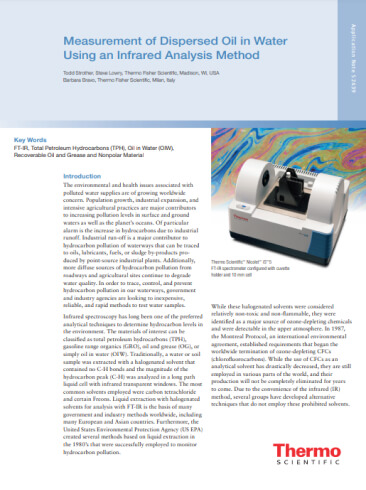
FT-IR: Measurement of Dispersed Oil in Water
Using an Infrared Analysis Method

FT-IR: Investigating why a
plastic part failed

FT-IR: Analyzing Automotive Paints With
Extended Range ATR: 1800–100 cm-1
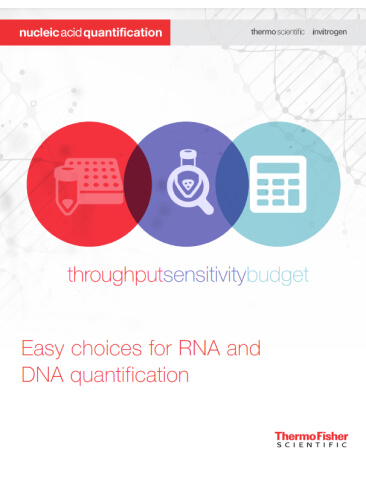
UV-VIS: NanoDROP: Easy choices for RNA and
DNA quantification
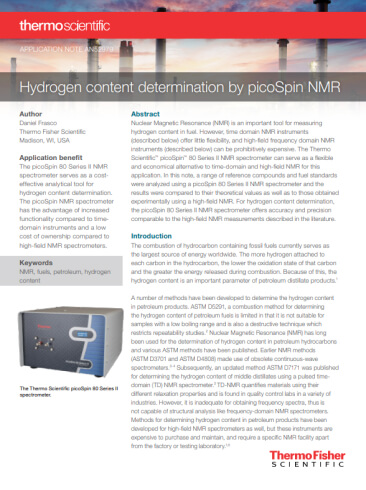
NMR: Hydrogen content determination by picoSpin NMR

FT-NIR: Protein secondary structure elucidation using FTIR spectroscopy

FT-NIR: A Guide to Raw Material Analysis using
Fourier Transform Near-Infrared Spectroscopy

FT-NIR: Protein, Fat and Moisture Analyses of Fresh Fishmeal with an Antaris II FT-NIR Analyzer
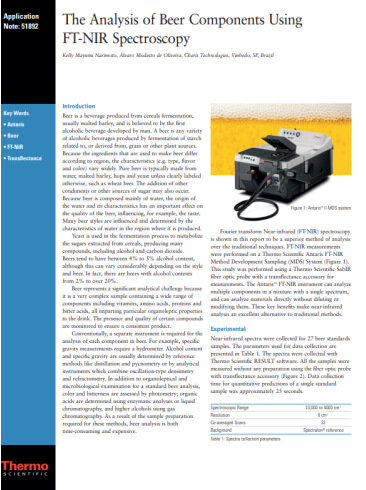
FT-NIR: The Analysis of Beer Components Using FT-NIR Spectroscopy
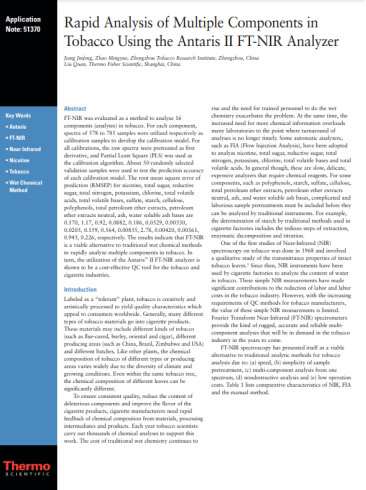
FT-NIR: Rapid Analysis of Multiple Components in
Tobacco Using the Antaris II FT-NIR Analyzer

Raman: Characterizing Graphene with Raman Spectroscopy

Raman: Characterization of Amorphous and Microcrystalline Silicon using Raman Spectroscopy
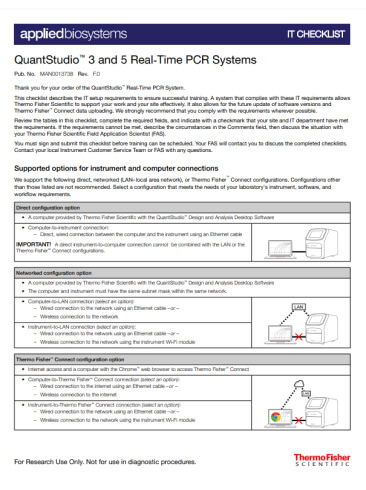
Raman: Microscope Mapping on Formulated Pharmaceutical Samples Using the Dispersive Raman Technique
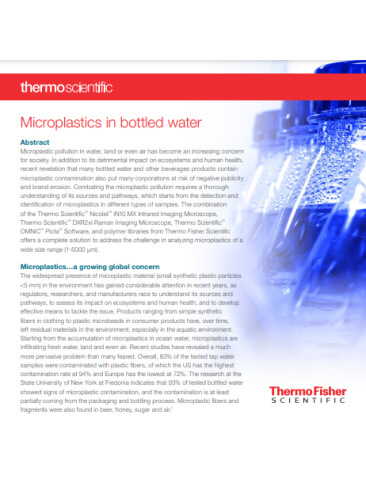
RAMAN: Microplastics in bottled water
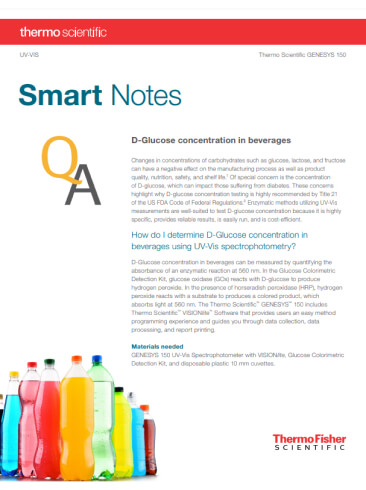
UV-VIS: D-Glucose concentration in beverages

UV-VIS: Vis and UV-Vis spectroscopy solutions for industrial labs
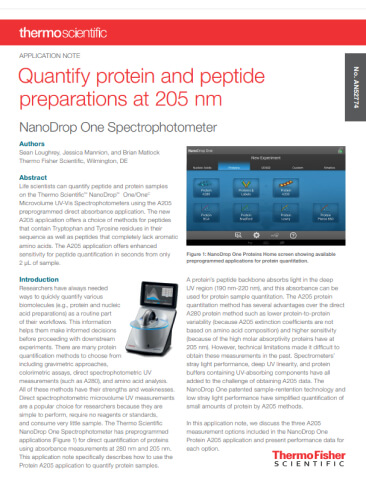
UV-VIS: NanoDrop, Quantify protein and peptide preparations at 205 nm
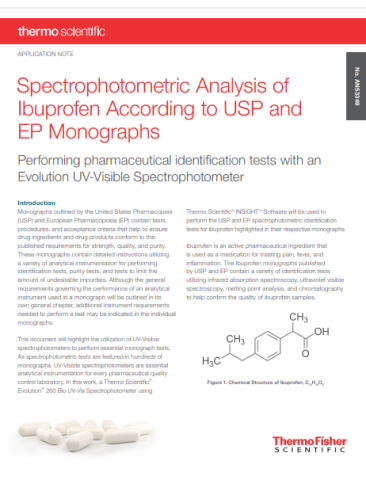
UV-VIS: Spectrophotometric Analysis of Ibuprofen According to USP and
EP Monographs
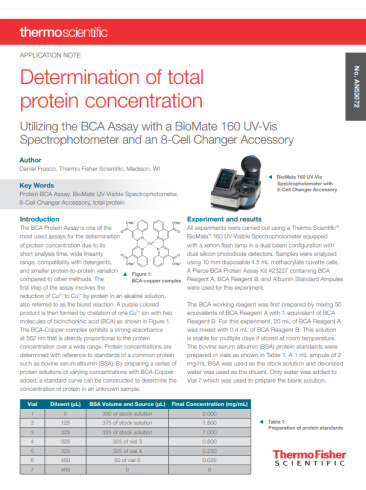
UV-VIS: Determination of total
protein concentration
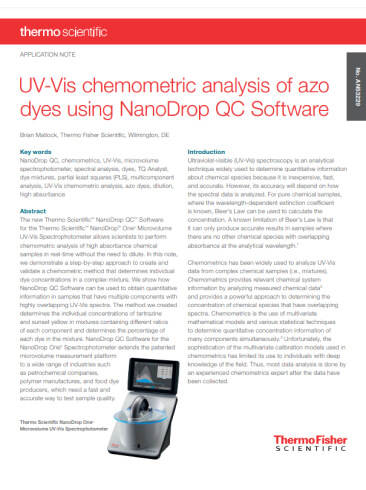
UV-VIS: NanoDrop, UV-Vis chemometric analysis of azo
dyes using NanoDrop QC Software
